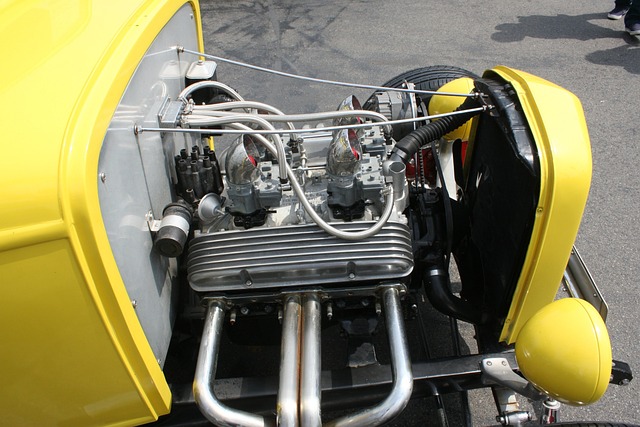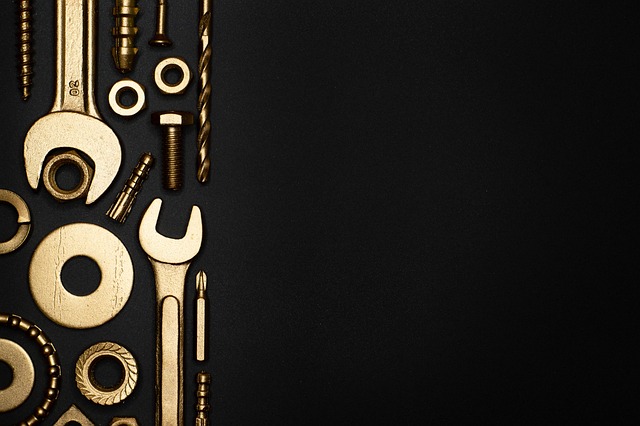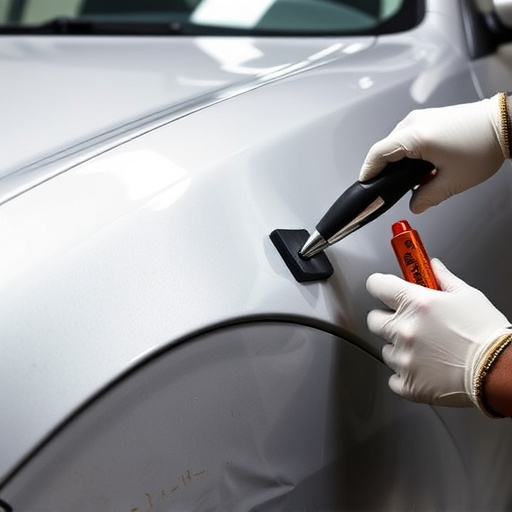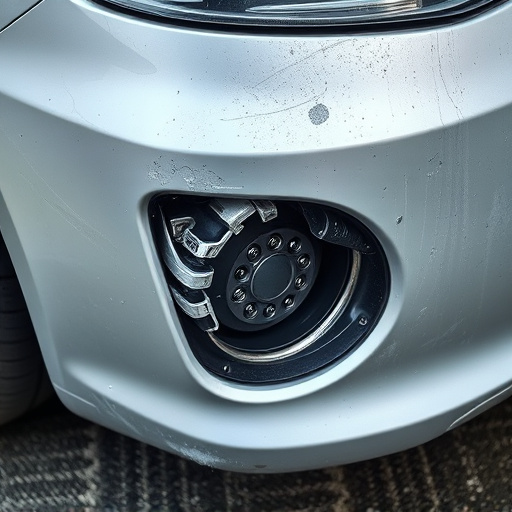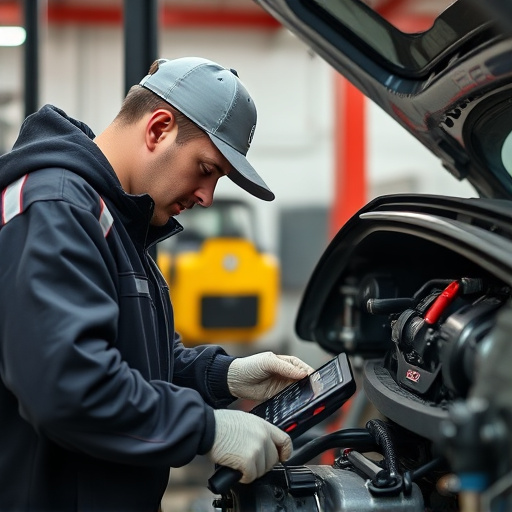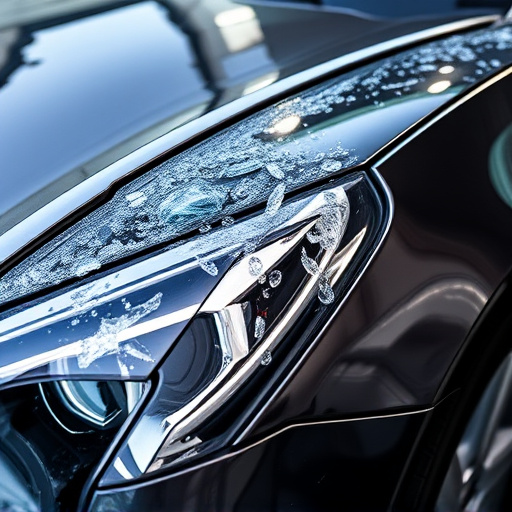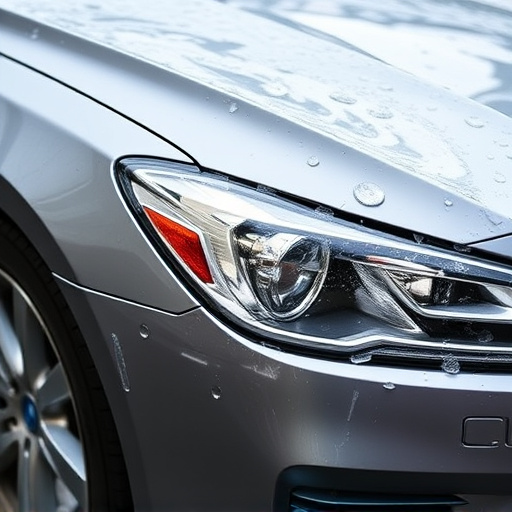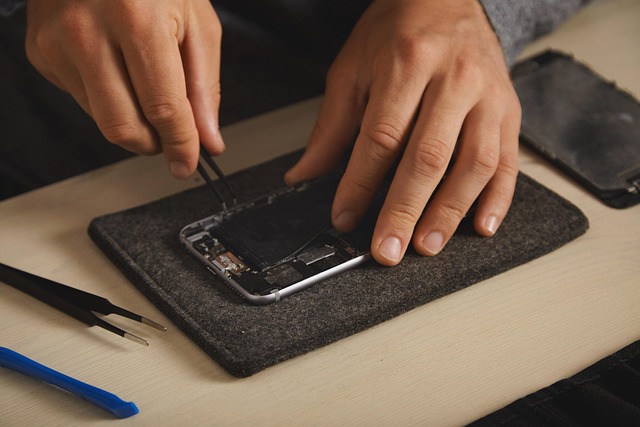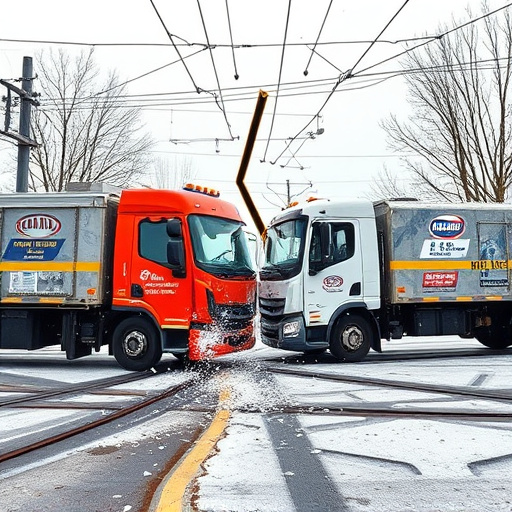A Final Drive Test is a crucial repair quality inspection in auto body services, mimicking real-world driving conditions to uncover potential issues missed during initial repairs, ensuring top-notch quality and customer satisfaction. This multi-step process includes visual assessments, functional tests on seals and lights, and verification of measurements for cosmetic and structural integrity. For precise results, mechanics must interpret data effectively while maintaining controlled variables, requiring continuous training and best practices adherence.
A final drive test is an invaluable tool in ensuring the highest standards of repair quality inspection. This rigorous procedure validates the performance and reliability of a repaired vehicle, offering peace of mind to both mechanics and customers alike. By understanding the protocols and key components involved, we can appreciate how these tests mitigate errors and challenges, ultimately enhancing safety and customer satisfaction. Explore the benefits, challenges, and best practices surrounding this essential process in modern automotive repair.
- Understanding Final Drive Test Protocols
- Key Components of Repair Quality Inspection
- Benefits and Challenges: Ensuring Accuracy
Understanding Final Drive Test Protocols

A Final Drive Test is a crucial step in ensuring top-notch repair quality inspection for any vehicle undergoing auto body services or car collision repair. These tests go beyond mere visual inspections and static checks, involving dynamic assessments to mimic real-world driving conditions. Protocols typically include testing the vehicle’s performance, handling, and safety features at various speeds and under different weather conditions.
This comprehensive evaluation allows skilled technicians to uncover potential issues that may have been overlooked during initial repairs. By subjecting cars to rigorous final drive tests, workshops can confidently certify that car body repair has met the highest standards, ensuring customer satisfaction and roadworthiness. It’s a critical process that distinguishes quality auto body services from ordinary maintenance routines.
Key Components of Repair Quality Inspection

A comprehensive repair quality inspection is a multifaceted process that involves several crucial components. The first step entails a thorough visual assessment of the vehicle’s exterior, including examining the car paint services for any imperfections, scratches, or signs of previous repairs. This initial check provides a baseline and helps identify potential issues that might require further attention during the repair process.
Subsequent to the visual inspection, the auto body repair specialists will conduct functional tests on various components such as door seals, windows, and lights. These tests ensure that every part of the automotive body shop’s repairs function optimally. Additionally, a quality inspection involves verifying the accuracy of measurements taken during the disassembly and reassembly process, ensuring that all parts are correctly aligned and fitted. This meticulous attention to detail guarantees not just cosmetic but also structural integrity in automotive body shops.
Benefits and Challenges: Ensuring Accuracy

Benefits of Final Drive Test for Accuracy:
A final drive test is an invaluable tool in the realm of automotive repair quality inspection. It offers a real-world scenario to assess the performance and safety of a repaired vehicle, especially post collision repair. This test provides a comprehensive understanding of how the vehicle handles various driving conditions, ensuring that all repairs are up to standard. By simulating everyday driving patterns, mechanics can identify any subtle issues or discrepancies that might have been overlooked during the initial inspection process.
Challenges and Considerations:
While final drive tests significantly enhance repair quality, they also present certain challenges. Accurate testing demands consistent environmental conditions and controlled variables. Factors like road surfaces, weather, and vehicle load can impact results. Thus, mechanics must be adept at interpreting data and identifying anomalies to maintain high-quality standards in collision repair or automotive repair processes. This involves continuous training and adherence to best practices to ensure the accuracy of every repair quality inspection.
A final drive test serves as a critical component of the repair quality inspection process, ensuring that vehicles meet high-standard performance criteria before they leave the workshop. By meticulously evaluating various systems and components under real-world conditions, this comprehensive test identifies any lingering issues or discrepancies, enhancing overall vehicle reliability. Incorporating these tests into standard procedures is essential for maintaining consistent repair quality inspection, ultimately fostering customer satisfaction and confidence in the after-sales service experience.
